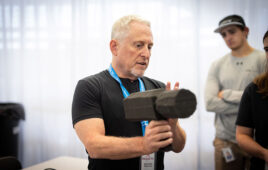 As part of the $19.3 billion allocated by Congress to NASA for the 2016 fiscal year budget, $55 million will go towards accelerated development of a habitation module for use in potential deep space missions.
As part of the $19.3 billion allocated by Congress to NASA for the 2016 fiscal year budget, $55 million will go towards accelerated development of a habitation module for use in potential deep space missions.
According to SpaceNews, the report states “NASA shall develop a prototype deep space habitation module within the advanced exploration systems program no later than 2018.” Further, the agency is required to provide Congress with a status update on the project within 180 days of the appropriation bill’s enactment.
The $55 million will come out of the $350 million Exploration Research and Development line item in the budget.
With the Orion Spacecraft, NASA hopes to send humans as far as Mars. However, the habitable volume of the crew capsule is only around 316 cubic ft.
SpaceNews reports the agency has kept mum regarding the development of a habitation module.
In March, the agency announced new partnerships with the commercial industry to advance studies and technology development in the realms of advanced propulsion, habitation, and small satellites. For the habitat component of its Next Space Technologies for Exploration Partnerships programs, the agency partnered with Bigelow Aerospace LLC, The Boeing Company, Dynetics Inc., Hamilton Sundstrand Space Systems International, Lockheed Martin Space Systems Company, Orbital ATK, and Orbital Technologies Corporation. The “habitat projects will have initial performance periods of up to 12 months, at a value of $400,000 to $1 million for the study and development efforts, and the potential for follow-on phases to be defined during the initial phase,” according to NASA.
Sam Scimemi, the International Space Station director at NASA, told SpaceNews he hopes to test a habitation module in cislunar space in the late 2020s. Whether the building of the module will be farmed out to a commercial company or built internally remains to be seen.




